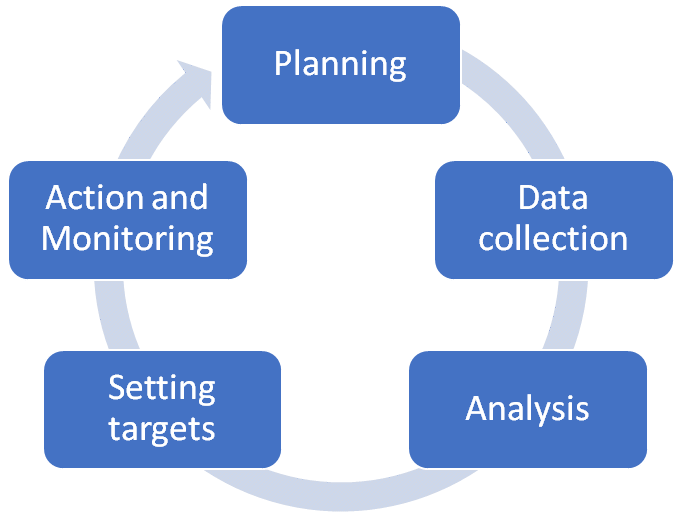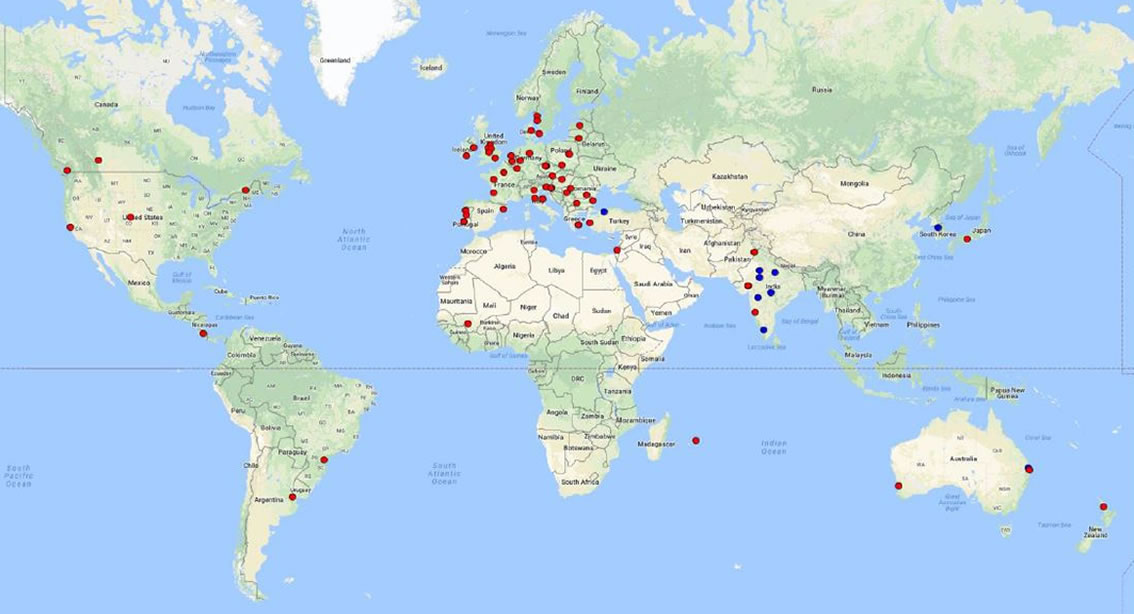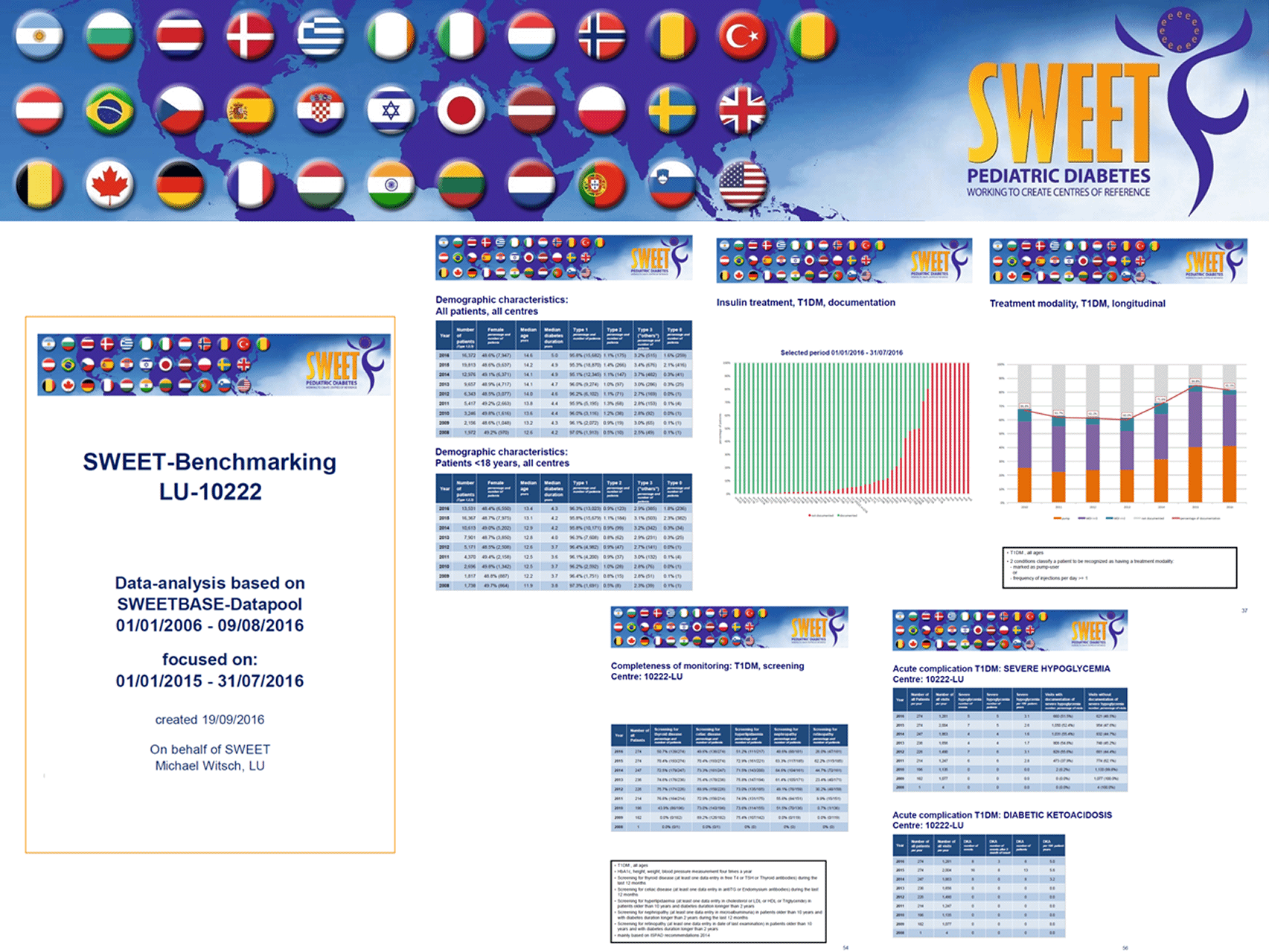Benchmarking in SWEET
Despite the existence of evidence-based guidelines for the care of children with diabetes, widespread gaps in knowledge, attitude, and practice remain. How can SWEET help to fill these gaps? What can SWEET offer to his members to satisfied their needs to improve?
Benchmarking is a core pillar of the SWEET initiative. Sharing data, comparing each other in non-competitive manner results in learning from and with others.
You can’t know where you are going until you know where you’ve been.Anonymous
Collecting data in high quality: the biannual data collection includes a feedback report (example to download or to pop-up) and allows the member to correct the errors or inconsistencies of their data. Our principle is to focus on a limited number of items in the database, roughly consolidated. You can imagine that in this extremely rapid growing group with huge differences in technical prerequisites keeping a solid data set in high quality is challenging.

SWEET accompany his members in the whole circle of benchmarking.
Presenting the data
-
The members receive access to the SWEET Cloud – our new online Benchmarking platform where you can view your centers benchmarking data as well as browse through graphs displaying data from all around the world! This Benchmarking data is updated twice a year, according to the two data uploads per year. All graphs can be downloaded for presentations or to share with your team or others. The latest SWEET Benchmarking data is always discussed at the SWEET Meetings.
The publication of the SWEET-Benchmarking-Report will be disussed at the SWEET-meeting.
-
SWEET – Meeting: The biannual SWEET meetings (one is held during the ISPAD congress) give us a good possibility to focus on data quality, to show the strength of the data collection in SWEET but also the weaknesses. We discuss the pro and cons of introducing news items to the database.
Promoting the process of benchmarking:
By giving SWEET members the opportunity to compare their data SWEET enables you to follow the circle of benchmarking easily.
- Planning means a commitment for the whole group to create a dataset which can be collected realistically under daily work conditions. The group should be convinced that these data have an importance for them. SWEET members are encouraged to contribute actively to the choice of dataset. On what should we focus, which targets are realistic. The yearly reevaluation of the SWEET dataset is considered as a pillar of the SWEET meeting.
- Data collection: If you are starting with data collection from scratch, consider the different options which SWEET offers to you. Maybe you are still working with paper files or an electronic patient record which is not adapted to your needs as diabetologist. Then the DPV software which is free of charge in the SWEET framework could be a perfect solution. The system is created from the point of view of a clinical working team. The workflow in DPV is customized on out- and inpatient care, allows the incorrect the multidisciplinary team in entering their consultation, facilitate the creation of medical reports, treatment schedules and has a powerful statistic module. You will not miss the important screenings (albuminuria) again because in seconds you create a query showing up the patients who are still not screened. The process of data gathering will become a side effect and is no more additional work. Your completeness of data will rise and supported by so-called watchdogs also the quality of data
- Find a detailed description of the system here. Or you are maybe so much delighted by the idea to facilitate your daily work that you directly download a test version of the DPV.
- For those of you working with an easy to use electronic health care record which fits your needs, you only have to create a consistent export in an Excel file (or other data format).
- If there is no possibility to export data directly from your electronic health record, you are still working on paper files, or there are other reasons we also accept more “handmade” Excel files even it is not recommended.
- Analysing your data consist in the first step an evaluation of consistency and inconsistency. Are you using the same patient identifier from one export to the next, are there obvious errors (HbA1c of 70% is obviously an error of data processing). You get a feedback report on your data allowing you to correct them for the next round. The next step is merging the data from all centers in one database. This database is the fundament for all research activities (link) and the benchmark report.
- Target setting is a task of our national and international scientific organisations, and you know how much these targets influence us. However, target setting also means to establish your local targets. For your team, for individual patients, for certain groups of patients. These targets differ extremely based on your working environment. The rate of death at manifestation could be the crucial target in one center and find better solution to motivate adolescents to take care of their disease in another one.
- Action and Monitoring: The process of target setting leads you instantly to the question “what to do” – the part of the action in the benchmarking process. Sometimes we stuck exactly at this point. We have become very good in our analysis. We identify the gaps. And now, what to do? At this point, SWEET can support their members to find partners with comparable tasks. We can encourage each other to try new concepts, to “think out of the box”.
Change is hard at first, messy in the middle and gorgeous at the end.Robin Sharma
- No action without monitoring: the benchmarking allows you to monitor your change of practice. The longitudinal approach gives you the capacity to identify trends leading us to scientific studies. The careful monitoring of our actions can conduct to a virtuous circle and also enables us to a realistic estimation of our beliefs as professionals.
To create a sustainable international group the active participation of the members is mandatory and the flexibility of the organization to adapt to the needs of their members. If you are interested in raising your understanding for your work in comparison to the other centers, countries, cultures and practices.
JOIN US – BECOME AN ACTIVE MEMBER

